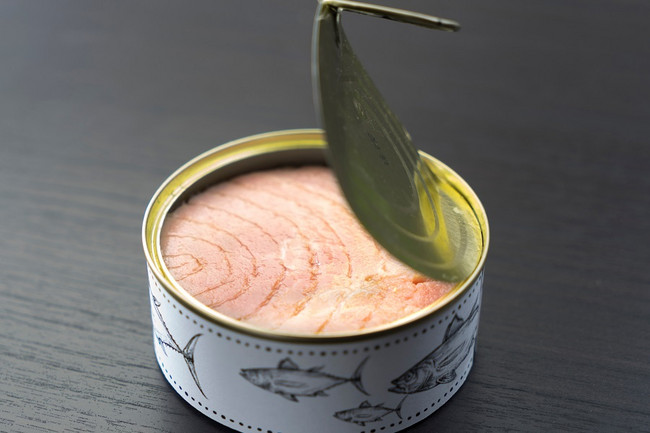✕



✕

Tag:tuna mercury 2024-11-01 09:32

Lab tests of 148 tins of canned tuna sold in the EU, conducted by environmental NGO Bloom, have revealed “unprecedented” levels of mercury. The French advocate alleges that international organizations and fisheries associations echo industry narratives that downplay the risks of mercury in tuna.
However, Pesca España, a Spanish association named in Bloom’s report, tells Food Ingredients First that it is “truly reassured because our statements are not based on opinion, but are based on science and rigorous scientific studies.”
Bloom reports that all the tested cans were contaminated with mercury, while 57% exceeded the strictest maximum mercury limit — 0.3 mg per kg — defined for fish in the EU.
The organization claims that a particular tin from the Petit Navire brand bought in a store in Paris, France, showed a level of 3.9 mg per kg, which it says is 13 times higher than the specified limit.
“Mercury is a powerful neurotoxin that binds to the brain and is very difficult to get rid of. Everyone knows that,” says Julie Guterman, a researcher at the NGO and the main author of the survey.
However, Pesca España says it has “never denied at any time the presence of mercury in fish.”
“We simply wanted to inform the population that it does not really pose a health risk at all. That’s because mercury possesses a strong binding affinity for selenium and acts as a magnet for selenium, which produces a non-absorbable mercury-selenium substance in the human body. As a result of this new compound, the body eliminates mercury before it is deposited in fat tissue and causes damage.”
“So, in other words, this alarmism is not real,” the association tells us.
Current mercury limits
According to the European Commission, methylmercury is the most common chemical form of mercury found in the food chain.
Fish and other seafood are the most significant contributors to inorganic mercury exposure through diet among Europeans. Fish meat is the most common exposure medium for all age groups, followed by fish products.
Mercury targets the liver, the nervous, developmental, immune and reproductive systems.
Bloom asserts that despite these concerns, European authorities set mercury limits based on contamination levels typically found in tuna instead of its health impact on adults and children. The established threshold allows 95% of them to be sold.
Bloom claims that tuna is one of the most commonly contaminated species but can contain over three times more mercury than cod, even though the risks of mercury do not differ based on the type of species.
Checks and balances

At the European level, Bloom alleges that international bodies involved in setting the standard for mercury contamination of seafood often act under the influence of “tuna giants.”
“Alongside directly lobbying these bodies, the tuna industry is manufacturing doubt at full speed: funding public laboratories, recruiting an FAO expert to the tuna industry, running communication and marketing campaigns on the benefits of Omega-3s to divert attention from the dangers of mercury and pushing a narrative of consumer responsibility rather than market regulation and the measures to go with it,” claims the report.
However, Pesca España says many foods such as cereals contain mercury. “But unlike seafood, they do not contain selenium to neutralize it.”
“The selenium in fish, in addition to neutralizing the effect that mercury may have, is highly beneficial to health. It is a powerful antioxidant that may reduce the risk of cancer and is essential for thyroid function and the immune system.”
“The European Food Safety Authority has clarified that, despite the levels of mercury exposure, fish provides benefits and its consumption is recommended.”
In light of its investigation, the NGO demands checks and balances to “end the impunity” of the tuna industry and protect consumers.
Bloom wants distributors to commit to only selling tuna that does not exceed the 0.3 mg per kg mercury standard to decrease consumer exposure to contamination. It calls on manufacturers and distributors to stop promoting tuna “in any way” and warn buyers of its associated risks.
Additionally, the NGO’s agenda includes calls to remove products containing tuna from school cafeterias, childcare facilities, retirement homes, maternity wards and hospitals.
Pesca España notes that it is already taking measures to ensure that tuna products meet the highest health and safety standards for consumers.
“Regular checks are carried out to evaluate and update these guidelines. In fact, in Spain, a study carried out by the Spanish Agency for Food Safety and Nutrition on 21 samples of canned tuna found that the average level of mercury (0.26 mg/kg) was below the maximum limit established in the EU.”
“Moreover, as the report of the health agency stated, ‘no significant differences were found (p<0.05) between the total mercury content of canned tuna in oil in the Spanish market in 2011 with respect to those obtained in previous years (1990-2000 period).’”
US government moves to outlaw red food dye amid cancer and neurological disorder fears
Surging international vegetable oil quotations push up world food prices
dsm-firmenich reveals “Milky Maple” as flavor of the year 2025, tapping indulgence and comfort
Trump trade tariffs: How will international levies impact the F&B industry?
UAE-based social services organization opens food packaging center in Abu Dhabi
About Us Terms of Service Privacy Policy Contact Us
Hotline(+86)17301604571
 Enterprise WeChat
Enterprise WeChat
for Client Service
 EZBuy
EZBuy
WeChat APP
Sinoexpo Digital Platform
Shanghai Sinoexpo Informa Markets International Exhibition Co., Ltd. All rights reserved
沪ICP备05034851号-77
 沪公网安备31010402000543号
沪公网安备31010402000543号